CNA Staff, Oct 27, 2024 / 06:00 am
On her consecration day, a woman will usually wear a white dress as she approaches the altar of the Lord. It’s much like a wedding, but her bridegroom is Jesus Christ.
The little-known vocation of the consecrated virgin has grown in recent years. Although it existed in the early Church, it fell out of popularity in the Middle Ages as monasticism grew. In more recent years, there has been a resurgence of the role since Vatican II, which revised the rite.
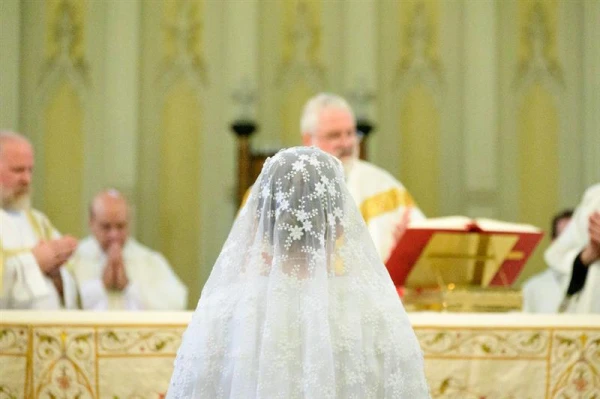
Today, there are more than 4,000 consecrated religious women in the world — 307 of them in the United States, according to Judith Stegman, president of the U.S. Association of Consecrated Virgins (USACV) and a canon lawyer.
Since the Vatican further defined the role and formation of consecrated virgins in 2018, Jenna Marie Cooper, a canon lawyer, writer, and consecrated virgin, has noticed an increased number of women choosing to consecrate themselves to God in this way, indicating that the vocation may continue to grow in the coming years.
What is a consecrated virgin?
Consecrated virginity today entails a dedicated prayer life, service to the diocese, and a “holy resolution” of celibacy. But it’s also a mystical marriage to Christ and a representation of Christ’s bride, the Church.
In the rite of consecration, the candidate makes her holy resolution through a series of yes or no questions and is consecrated by the bishop through the prayer of consecration, Cooper explained.
The rite of a consecrated virgin is reserved for women only: either religious sisters or laywomen committing to a life of prayer and celibacy outside of a monastery or convent.
A consecrated virgin is meant to be a sign of the Church as the bride of Christ. “Imaging the Church as the bride of Christ is behind this vocation,” Stegman explained.
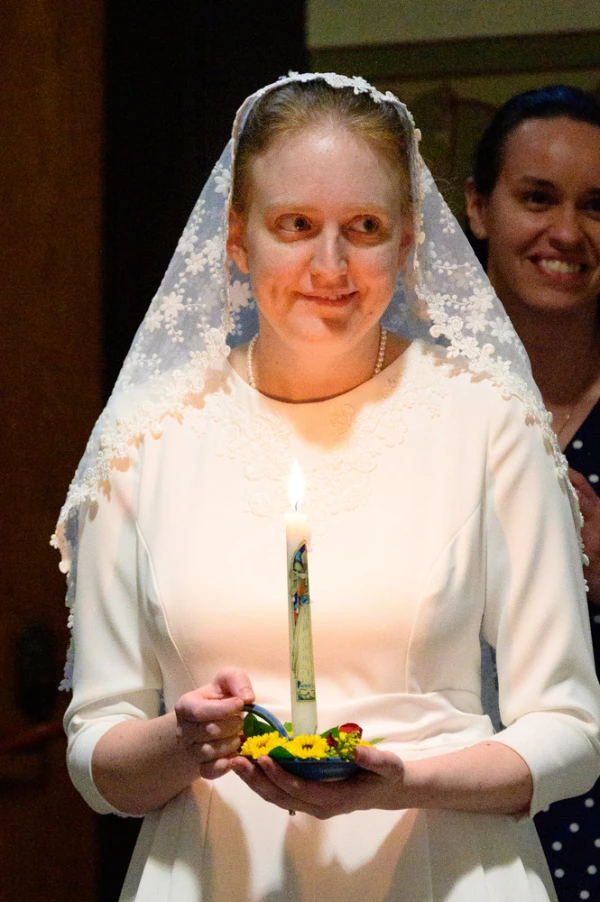
Women often wear a white dress that resembles a wedding gown for the ceremony, symbolizing their commitment to Christ as his spouse. The color white also references the baptismal garment, which Cooper said is “theologically appropriate.” Cooper recalled wearing her mother’s wedding dress, a simple wool garment, when she was consecrated — just four days before her parents’ wedding anniversary.
“This is a woman’s response with her open heart to Jesus,” Stegman added. “She becomes a bride of Christ.”
The consecration parallels the role of a priest, which is reserved for men in the Catholic Church. A priest represents “another Christ” and is a bridegroom of the Church. Similarly, a consecrated virgin represents the bride of Christ and is an image of the Church.
“This rite is specifically for women and not for men. The language throughout is for women,” Stegman explained. “A man might make a vow of chastity, but it’s different from being consecrated as a virgin bride of Christ.”
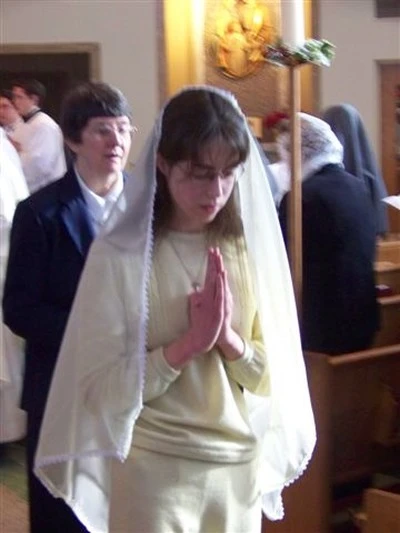
(Story continues below)
According to the Catechism of the Catholic Church, consecrated virgins are “called by the Lord to cling only to him with greater freedom of heart, body, and spirit, have decided with the Church’s approval to live in the respective states of virginity or perpetual chastity” (CCC, 922).
Unlike religious sisters who are connected to an order and move to where their superiors instruct them, a consecrated virgin is tied to a diocese. She works in mutual discernment with her local bishop, though she does not make a vow of obedience like many religious orders do.
“It’s also a prayerful presence,” Cooper explained. “Having women who are specifically committed to praying for this diocese, these priests, this local Church — I think that’s something very important. And it’s just a good presence for the people to have women who are praying for them in this very maternal way.”
The life requires more than simply staying single. Consecrated virgins regularly participate in the Divine Office, also known as the Liturgy of the Hours, which is the prayer of the Church.
“We are handed the Divine Office during the consecration ceremony, and the introduction to the rite specifically says that we ought to be — and it’s a very strong ‘ought to be’ — praying at least morning and evening prayer from the office,” Stegman added.
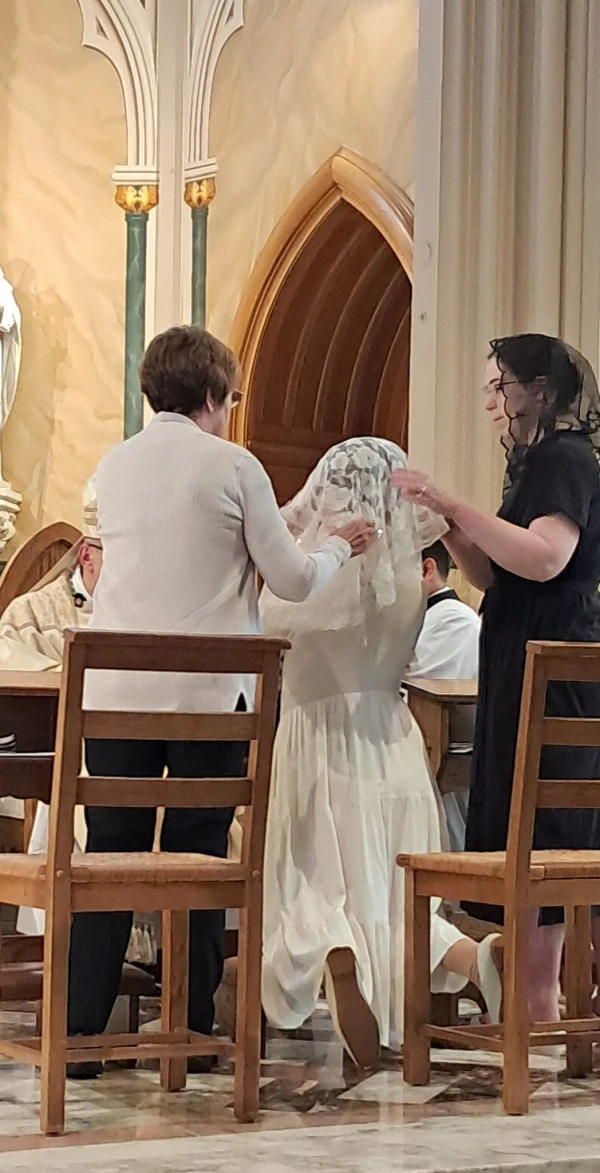
Catholic women seeking out consecrated virginity must be consecrated to God by their diocesan bishop. The consecration constitutes a mystical betrothal to Christ as well as dedicated service to the Church.
Unlike religious brothers and sisters, consecrated virgins live in a secular state of life: They have jobs, they don’t necessarily live in community, and they provide for their own needs. Consecrated virgins also don’t wear habits, nor do they have a title. The local diocese is not financially responsible for them, and though consecrated virgins don’t take a vow of obedience, they receive direction from their diocesan bishop.
The history of consecrated virginity
Virgin saints have existed throughout the history of the Church, and consecrated virgins existed before female religious orders were well established. Their vocation is modeled after the Blessed Virgin Mary, who is their patroness. According to tradition, Mary consecrated her virginity at a young age.
Early Church Fathers such as St. Ignatius of Antioch mentioned consecrated virgins as a distinct group, dating back to about 110 A.D.
“When you’re reading about early consecrated virgins, they don’t give us a blueprint for modern consecrated virgins because there’s a lot of cultural differences,” Cooper explained. “But there are very early references to women being consecrated with this [rite]. This is still very historical.”
St. Ambrose also referenced his sister’s — St. Marcellina — rite of consecration of virginity by the pope in a letter.
“When you get to more legendary saints and stories, it’s hard to tell. But [for] saints that we do know more about their life from that era, we do have some evidence of this rite existing. So it is actually that old,” Cooper continued.
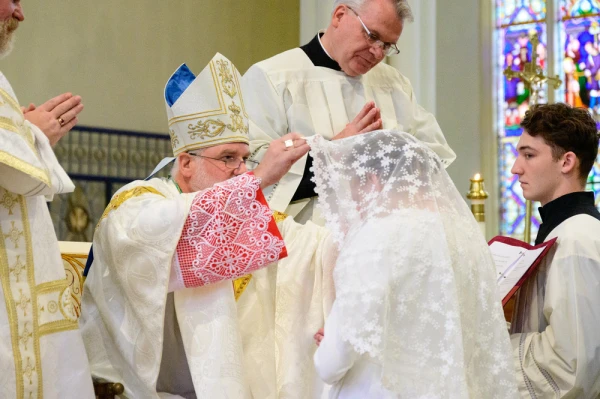
Some religious orders, such as the Benedictines and the Cartusians, preserved the use of the rite of consecrated virginity, Cooper explained.
“That’s why we still have the rite, because these few religious orders were still using it,” Cooper explained.
Virgin martyrs in the Roman Canon, such as Agnes, Lucy, and Cecilia, are considered consecrated virgins, Cooper noted, though these women weren’t consecrated in the rite as it exists today. A quote attributed to St. Agnes is included in the consecration rite.
The practice of consecrated virginity declined in the sixth century as monastic religious life grew more popular. Consecrated religious life became extremely rare in the Middle Ages.
The only time that consecrated virgins were not allowed by the Church was a brief period in the early 20th century, but Vatican II later announced the decision to revise the rite of consecrated virginity in paragraph 80 of Sacrosanctum Concilium. The Church reaffirmed the vocation of consecrated virginity and then further developed its structure in 2018 in the document Ecclesiae Sponsae Imago.
“That gave us a little bit more about the way of life of consecrated virgins and what is and is not required of this, and a little bit of what formations would look like,” Cooper said.
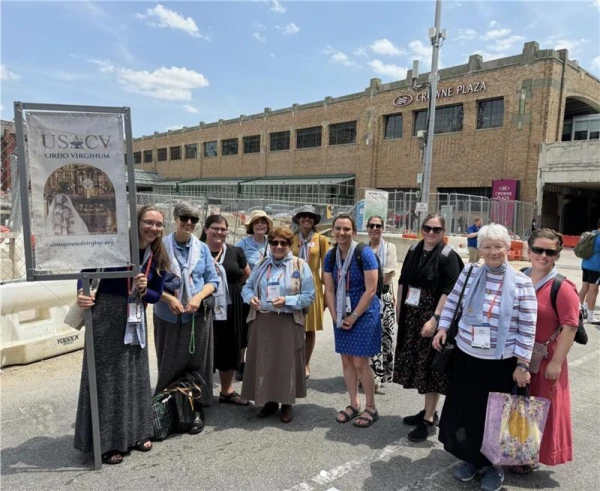
Ecclesiae Sponsae Imago has helped grow and define the vocation. Cooper said that even since her own consecration in 2009, she’s seen more interest over the past five to 10 years, with more dioceses offering formation programs.
When asked what her hopes for the future of the vocation were, Cooper noted that while consecrated virgins “don’t need the numbers” in the same way that religious communities might, it’s been “a pleasant surprise and a joy” to see the growth of the vocation.
“It’s growing at a much faster rate than I ever envisioned this happening when I was consecrated 15 years ago,” she said. “But my hope is that diocese[s] would really focus on good formation programs and having a very careful sense of how you integrate consecrated virgins in the life of the local Church in a way that’s going to promote everybody’s flourishing.”
“My hope is that bishops will see the gift that this is for the Church and will make good use of that gift,” Cooper added.






